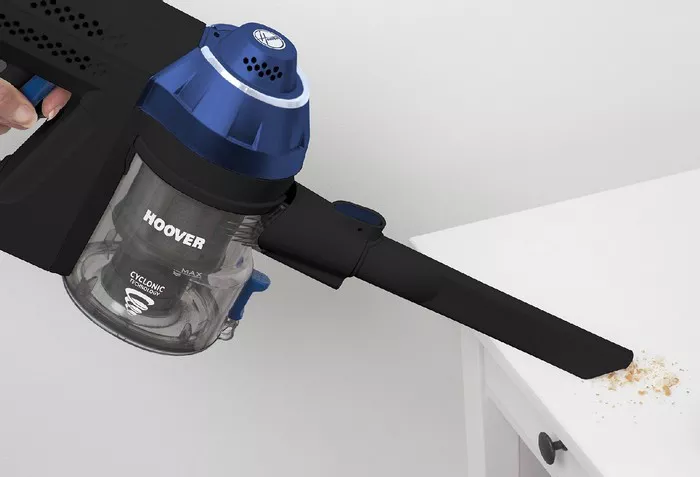Maintaining cleanliness in homes and commercial spaces is imperative for health, comfort, and aesthetics. Among the myriad tools available, the vacuum cleaner stands out as a cornerstone of modern cleaning technology. In this article, we delve into the intricate mechanisms that power these indispensable devices, shedding light on their functionality and importance.
Basic Components
At its core, a vacuum cleaner comprises several essential components working harmoniously to remove dirt and debris from various surfaces. The primary components include the motor, fan, filter, and dust collection system.
The motor serves as the powerhouse of the vacuum cleaner, generating the necessary suction power to lift dirt and debris off surfaces. Connected to the motor is a fan, which creates airflow within the cleaner. This airflow is crucial for generating suction, as it creates a low-pressure zone inside the vacuum, causing air and particles to be drawn in.
Filters play a vital role in trapping dust and allergens, preventing them from recirculating back into the environment. Various types of filters, such as HEPA filters, foam filters, and bag filters, are employed based on the specific needs and capabilities of the vacuum cleaner.
The dust collection system stores the collected dirt and debris until it can be emptied. This system can utilize bags, dustbins, or cyclonic action to separate dirt from the airflow effectively.
Suction Mechanism
Understanding how a vacuum cleaner creates suction is fundamental to grasping its functionality. As mentioned earlier, the motor drives a fan, which creates airflow within the vacuum cleaner. This airflow, in turn, creates a low-pressure zone inside the device, causing air and particles to be sucked in from the surrounding environment.
The efficiency of the suction mechanism depends on various factors, including the power of the motor, the design of the fan, and the effectiveness of the filtration system. Higher-powered motors and well-designed fans can generate stronger suction, resulting in more effective cleaning.
Types of Vacuum Cleaners
Vacuum cleaners come in various shapes and sizes, each designed to cater to specific cleaning needs and preferences. The most common types include upright, canister, handheld, and robotic vacuum cleaners. While their primary function remains the same, their mechanisms may vary slightly to accommodate different cleaning tasks and environments.
1. Upright vacuum cleaners are popular for their ease of use and maneuverability, featuring a vertically oriented design with the motor, fan, and dust collection system housed in a single unit. Canister vacuum cleaners, on the other hand, comprise a separate motor and dust collection unit connected by a hose, offering greater flexibility and reach in tight spaces.
2. Handheld vacuum cleaners are compact and portable, making them ideal for quick cleanups and spot cleaning. Robotic vacuum cleaners automate the cleaning process, navigating autonomously across floors and carpets to remove dirt and debris.
Filtration
Filtration plays a crucial role in maintaining indoor air quality by trapping dust, allergens, and other microscopic particles. High-Efficiency Particulate Air (HEPA) filters are particularly effective at capturing small particles, making them a popular choice for allergy sufferers and those with respiratory issues.
Foam filters and bag filters are also commonly used in vacuum cleaners, offering different levels of filtration based on their design and material. Regular cleaning and maintenance of filters are essential to ensure optimal performance and prevent clogging, which can impair suction power and airflow.
Dust Collection
Once dirt and debris are captured by the vacuum cleaner, they need to be stored until they can be disposed of properly. Vacuum cleaners employ various methods for dust collection, including disposable bags, reusable dustbins, and cyclonic action.
Disposable bags are convenient and hygienic, allowing users to simply discard the bag when it is full. Dustbins, on the other hand, can be emptied and reused, reducing waste and operating costs over time. Cyclonic action utilizes centrifugal force to separate dirt from the airflow, depositing it into a collection bin without the need for a disposable bag.
Brushes and Agitators
Brushes and agitators are integral components of vacuum cleaners, helping to dislodge dirt and debris from surfaces for more effective cleaning. These rotating or vibrating elements agitate carpet fibers and loosen embedded dirt, making it easier for the vacuum cleaner to pick them up.
Different types of brushes and agitators may be employed based on the surface being cleaned, such as carpet brushes for soft surfaces and hard floor brushes for smooth surfaces. Regular inspection and cleaning of brushes and agitators are necessary to prevent blockages and maintain optimal cleaning performance.
Power Source
Vacuum cleaners typically rely on electricity as their primary power source, with corded models drawing power from a wall outlet. Cordless vacuum cleaners, on the other hand, utilize rechargeable batteries for portability and convenience.
Corded vacuum cleaners offer unlimited runtime, making them suitable for prolonged cleaning sessions without the need for recharging. However, their range of movement may be limited by the length of the power cord. Cordless vacuum cleaners provide greater freedom of movement but are limited by battery life and may require frequent recharging for extended use.
Maintenance
Proper maintenance is essential to keep a vacuum cleaner performing at its best and prolong its lifespan. Regular maintenance tasks include emptying dustbins or replacing bags, cleaning filters, and checking for blockages in hoses and attachments.
Emptying the dustbin or replacing the bag when it is full prevents loss of suction and ensures efficient dirt collection. Cleaning filters regularly prevents them from becoming clogged and maintains optimal airflow and filtration performance. Checking for blockages in hoses and attachments ensures unobstructed airflow throughout the vacuum cleaner, maximizing cleaning efficiency.
Conclusion
In conclusion, understanding how vacuum cleaners work is key to making informed purchasing decisions and using them effectively. By comprehending the basic components, suction mechanism, types, filtration methods, dust collection systems, brushes and agitators, power sources, and maintenance requirements of vacuum cleaners, users can maximize their cleaning performance and longevity. Regular maintenance and proper use are essential for ensuring that vacuum cleaners continue to keep homes and commercial spaces clean and healthy for years to come.

